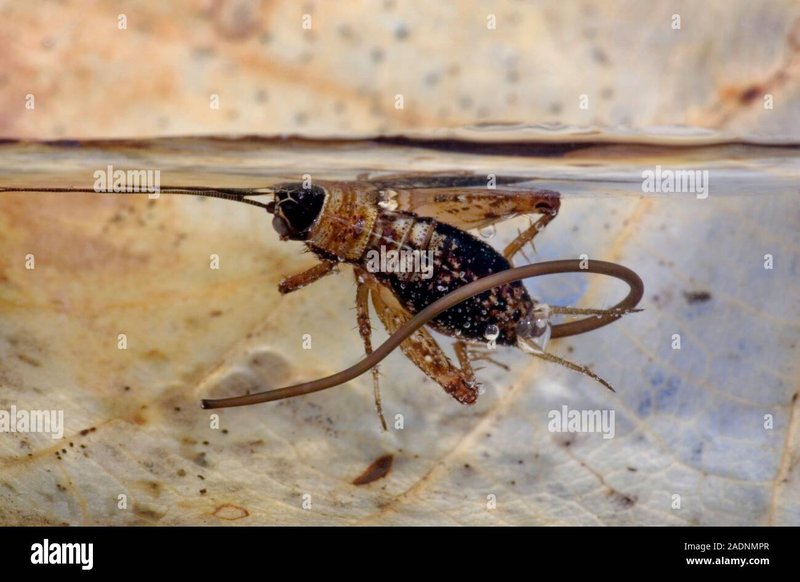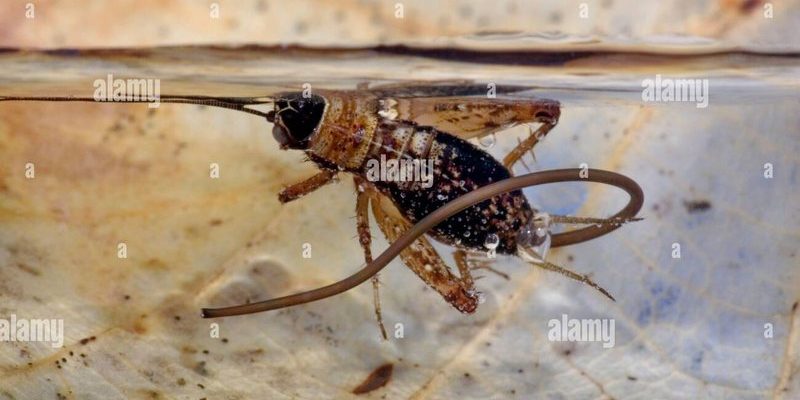
The interactions hairworms have with other microfauna in their ecosystem can be quite complex. They don’t just live in isolation. Instead, they engage with a variety of other tiny organisms, creating a web of relationships that can affect everything from local food chains to biodiversity. In this article, we’ll dive deeper into how hairworms interact with their fellow microfauna and what these connections mean for their environment.
What Exactly Are Hairworms?
Let’s start by understanding what hairworms are. Scientifically known as Nematomorpha, hairworms are elongated, thin parasites that primarily target arthropods, like insects. They can grow up to several inches long, depending on the species. Imagine a hairpin—slender and flexible, but alive and very much a part of a larger ecosystem.
These worms have a fascinating life cycle. They usually begin as eggs that hatch inside an insect host. Once inside, they develop and grow, consuming nutrients from the host. You might be wondering how they manage to manipulate their hosts so effectively. They release chemicals that affect the insect’s nervous system, driving it to water, where the hairworm can emerge. It’s a wild twist of nature’s playbook!
Once they’ve escaped into the water, these worms can reproduce, laying thousands of eggs. Their life cycle is a perfect example of parasitism, where one organism benefits at the expense of another. This relationship is not just a single event; it has ripple effects throughout the ecosystem.
The Host Insects: A Closer Look
Hairworms primarily target insects like crickets and grasshoppers. These hosts play a crucial role in the life of the hairworm. Let’s break it down.
– Nutrient Source: While inside their hosts, hairworms feed off the nutrients. This feeding process can weaken the host, affecting its behavior and health.
– Behavioral Manipulation: As mentioned earlier, the hairworm can influence the host’s actions, making it more likely to jump into water. This manipulation showcases a sophisticated relationship in nature—one that raises questions about how much control one organism can exert over another.
– Ecosystem Impact: When a hairworm manipulates its host, it inadvertently affects the broader ecosystem. For example, the host insect may become an easy target for predators, shifting the food web dynamics.
Thus, understanding how hairworms interact with their host insects helps us grasp the bigger picture of their ecosystem.
Hairworms and Other Microfauna
The world of microfauna is bustling with activity. These tiny organisms, including bacteria, protozoa, and small invertebrates, play crucial roles in nutrient cycling and food webs. Hairworms are just one part of this rich tapestry, but their interactions with these microfauna can be quite significant.
– Nutrient Recycling: When hairworms emerge from their host and die, they contribute organic matter to the environment. This material becomes food for microorganisms, helping to recycle nutrients back into the soil and water.
– Food Sources: Hairworms themselves can serve as food for various species upon emerging. For example, birds and fish might feed on newly hatched hairworms, integrating them into their diet and continuing the cycle of life.
– Microbial Interactions: The presence of hairworms can influence the microbial community in their ecosystem. It’s fascinating to think about how one species can impact the microbes around them, which can then affect the nutrients available to plants and other organisms.
Understanding these interactions helps illustrate the interconnectedness of life in these ecosystems.
The Role of Hairworms in Food Webs
Food webs can be intricate, and hairworms add an interesting twist to these relationships. They act as a link between different trophic levels, connecting primary producers, herbivores, and predators. Here’s how they fit in:
– Predation: As hairworms emerge from their hosts, they become vulnerable to predators. This makes them a food source for larger animals, contributing to the energy flow within the ecosystem.
– Impact on Host Population: By affecting host insect populations, hairworms can influence the availability of prey for higher-level predators. If hairworm infections reduce grasshopper populations, for instance, birds that rely on these insects for food may be impacted.
– Biodiversity Balance: The presence of hairworms can influence which species thrive in an ecosystem. A varied predator-prey dynamic can help maintain biodiversity, leading to a more resilient ecosystem.
Overall, hairworms play a subtle yet significant role in shaping the interactions within a food web.
How Hairworms Affect Insect Dynamics
Hairworms have a peculiar influence on insect dynamics. Their presence can lead to changes in the populations of both hosts and their predators. Here are a few points to consider:
– Population Control: By parasitizing certain insect species, hairworms can help regulate their populations. This control prevents overpopulation, allowing other species to coexist more harmoniously.
– Behavioral Changes: The way hairworms manipulate their hosts can lead to changes in the behavior of entire insect groups. Infected insects may become less cautious, increasing their vulnerability to predators.
– Competition Among Insects: The presence of hairworms can shift competitive dynamics among insect species. For instance, if one species is more susceptible to hairworm infection, it may struggle to compete for resources against less affected species.
These influences highlight the delicate balance of nature and the ways parasites like hairworms can impact entire communities.
Hairworms may seem like just another oddity in nature, but their interactions with other microfauna and the larger ecosystem are quite remarkable. By understanding how they influence host insects, food webs, and nutrient dynamics, we can appreciate the complexity of life on our planet. Each organism, no matter how small, has a role to play—reminding us of the interconnectedness of all living things. So, the next time you think of hairworms, remember they’re not just creepy critters; they’re vital players in the story of our ecosystems.

